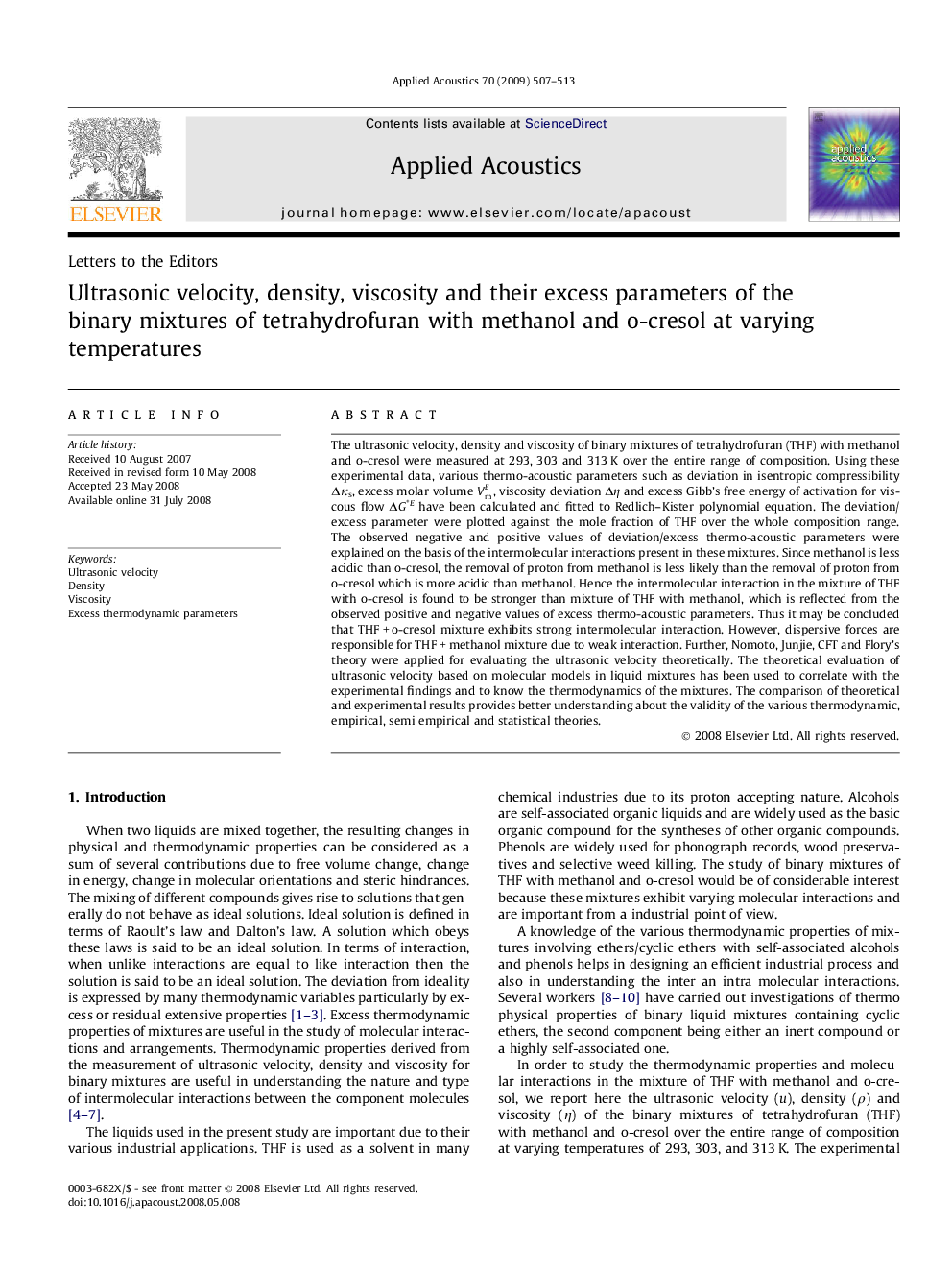| کد مقاله | کد نشریه | سال انتشار | مقاله انگلیسی | نسخه تمام متن |
|---|---|---|---|---|
| 762046 | 896661 | 2009 | 7 صفحه PDF | دانلود رایگان |

The ultrasonic velocity, density and viscosity of binary mixtures of tetrahydrofuran (THF) with methanol and o-cresol were measured at 293, 303 and 313 K over the entire range of composition. Using these experimental data, various thermo-acoustic parameters such as deviation in isentropic compressibility Δκs, excess molar volume VmE, viscosity deviation Δη and excess Gibb’s free energy of activation for viscous flow ΔG∗E have been calculated and fitted to Redlich–Kister polynomial equation. The deviation/excess parameter were plotted against the mole fraction of THF over the whole composition range. The observed negative and positive values of deviation/excess thermo-acoustic parameters were explained on the basis of the intermolecular interactions present in these mixtures. Since methanol is less acidic than o-cresol, the removal of proton from methanol is less likely than the removal of proton from o-cresol which is more acidic than methanol. Hence the intermolecular interaction in the mixture of THF with o-cresol is found to be stronger than mixture of THF with methanol, which is reflected from the observed positive and negative values of excess thermo-acoustic parameters. Thus it may be concluded that THF + o-cresol mixture exhibits strong intermolecular interaction. However, dispersive forces are responsible for THF + methanol mixture due to weak interaction. Further, Nomoto, Junjie, CFT and Flory’s theory were applied for evaluating the ultrasonic velocity theoretically. The theoretical evaluation of ultrasonic velocity based on molecular models in liquid mixtures has been used to correlate with the experimental findings and to know the thermodynamics of the mixtures. The comparison of theoretical and experimental results provides better understanding about the validity of the various thermodynamic, empirical, semi empirical and statistical theories.
Journal: Applied Acoustics - Volume 70, Issue 3, March 2009, Pages 507–513